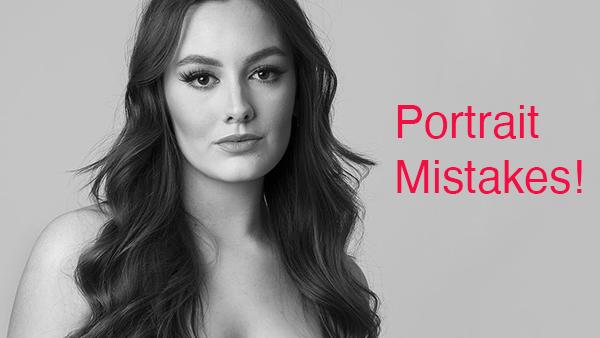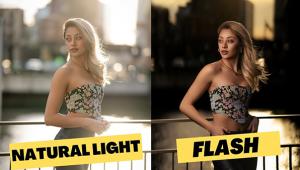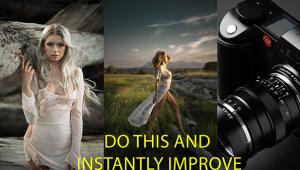6 Typical Portrait Mistakes and How to Fix Them (VIDEO)

When you're just getting started in photography, shooting portraits can be both fun and intimidating. It's fun because you can get your friends and family to act as models and just start shooting away. It can be intimidating though because you're liable to make a few mistakes that could make your subjects look less than their best.
And nobody likes a bad portrait of themselves! Plus, it makes you look like a lousy photographer, which could ruin your confidence.
The good news is there are plenty of portrait pros out there who can help you understand your mistakes and show you how to fix them. One such photographer is Paul Farris of Photo Genius who explains six common portrait photography mistakes and how to fix them. In the clip at the bottom of this post, Farris photographs model Georgia Phillips while explaining these typical portraiture errors.
#1 Eyes Not Sharp
"One of the most common problems I see are portrait photos where the eyes of the subject aren't sharp," Farris says. "It's really important to make sure that the eyes of your subject are in focus and for that reason you need to learn how to control your camera's focus points."
#2 Wrong Focus Mode
"Another common problem is people not using the right focus mode. Aside from manual focus, if you're using autofocus which I would recommend, there are two focus modes. And it's important to use the correct one. One is designed for non-moving subjects and the other for moving subjects."
#3 Wrong Lens Choice
"Another really common problem is not knowing which lens to us to get the best results. The focal length of the lens you're using will have a big impact on the look and feel of the portrait and, in particular, the shape of the face."
#5 Slow Shutter Speed
"The next common problem I see is using a shutter speed that's too slow and this can result in blurry images. This can happen in two ways. If you're hand holding the camera and your shutter speed is too slow then your image may blur, simply because you're not holding the camera steady. The other way this can be a problem is if you're using a tripod, but your subject is moving, and they blur."
#6 Choosing a Wide Aperture Isn't Always Necessary
"Just because you've got a lens that has a super wide aperture, you don't have to use it. For example, I've been shooting mostly around f/8 to f/9. It's given me some fantastic results and the images are super sharp."
















































